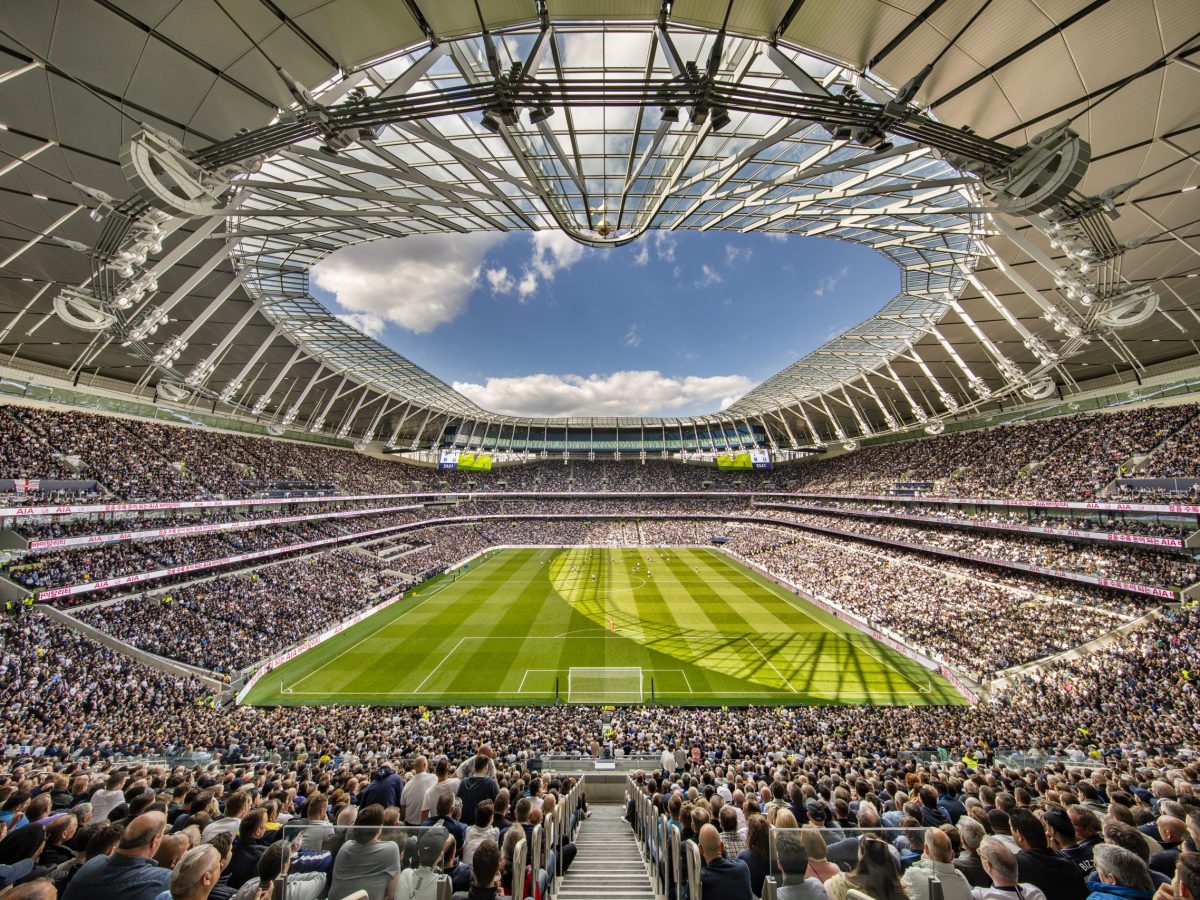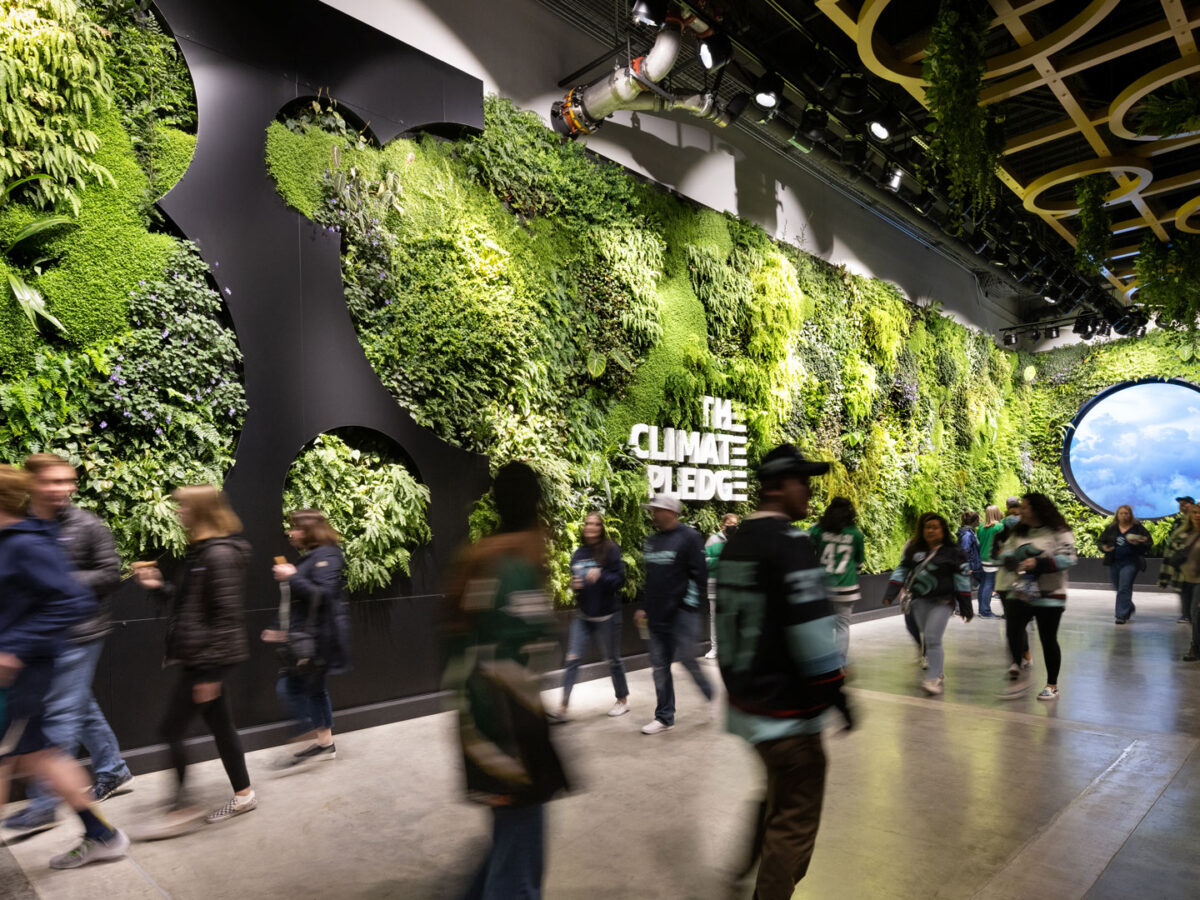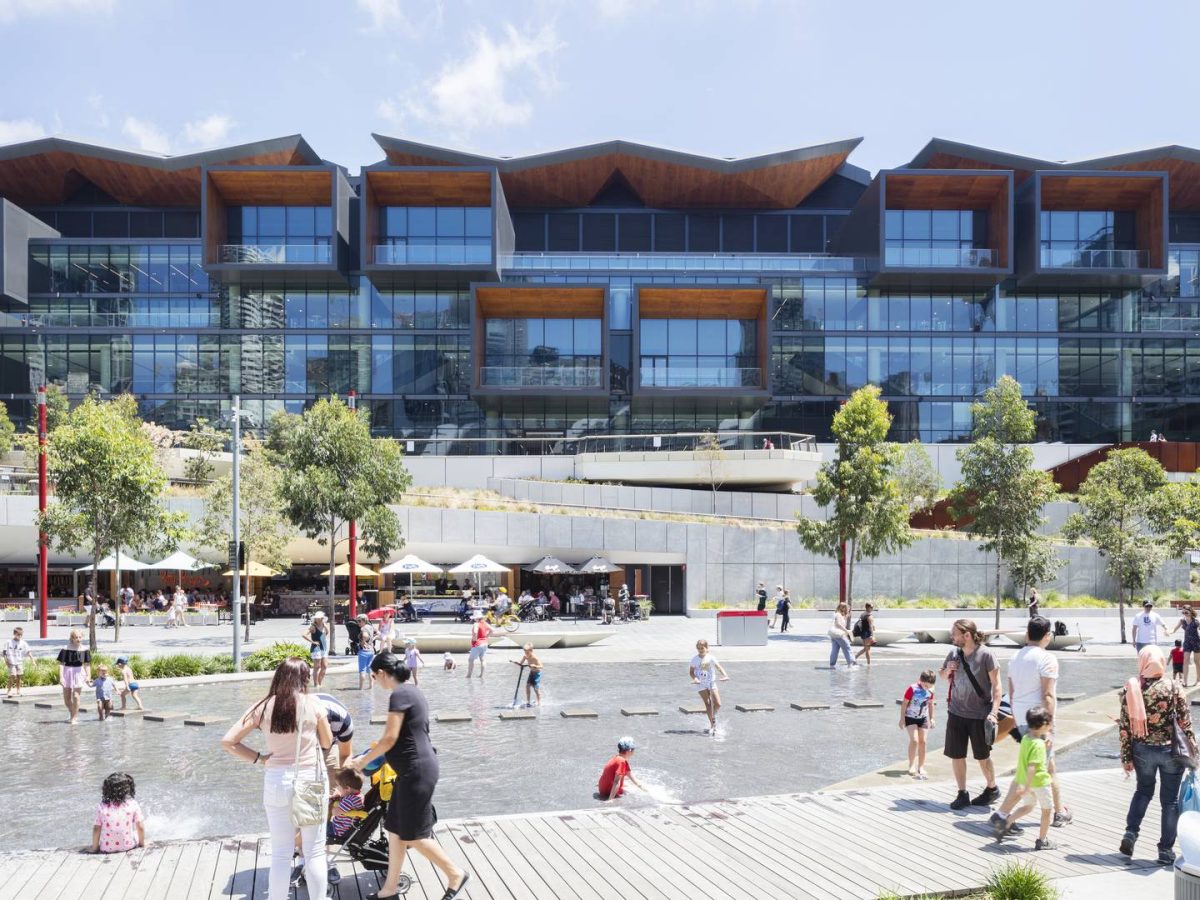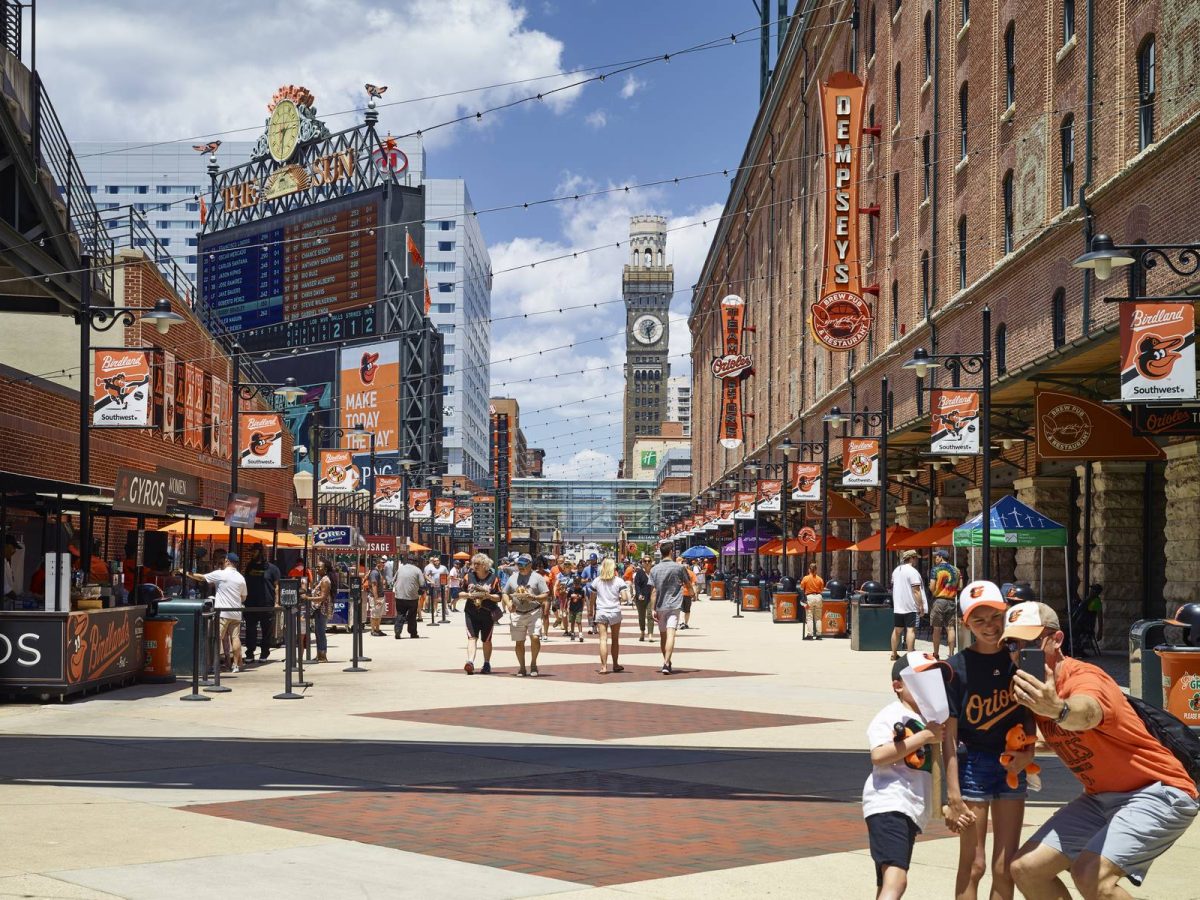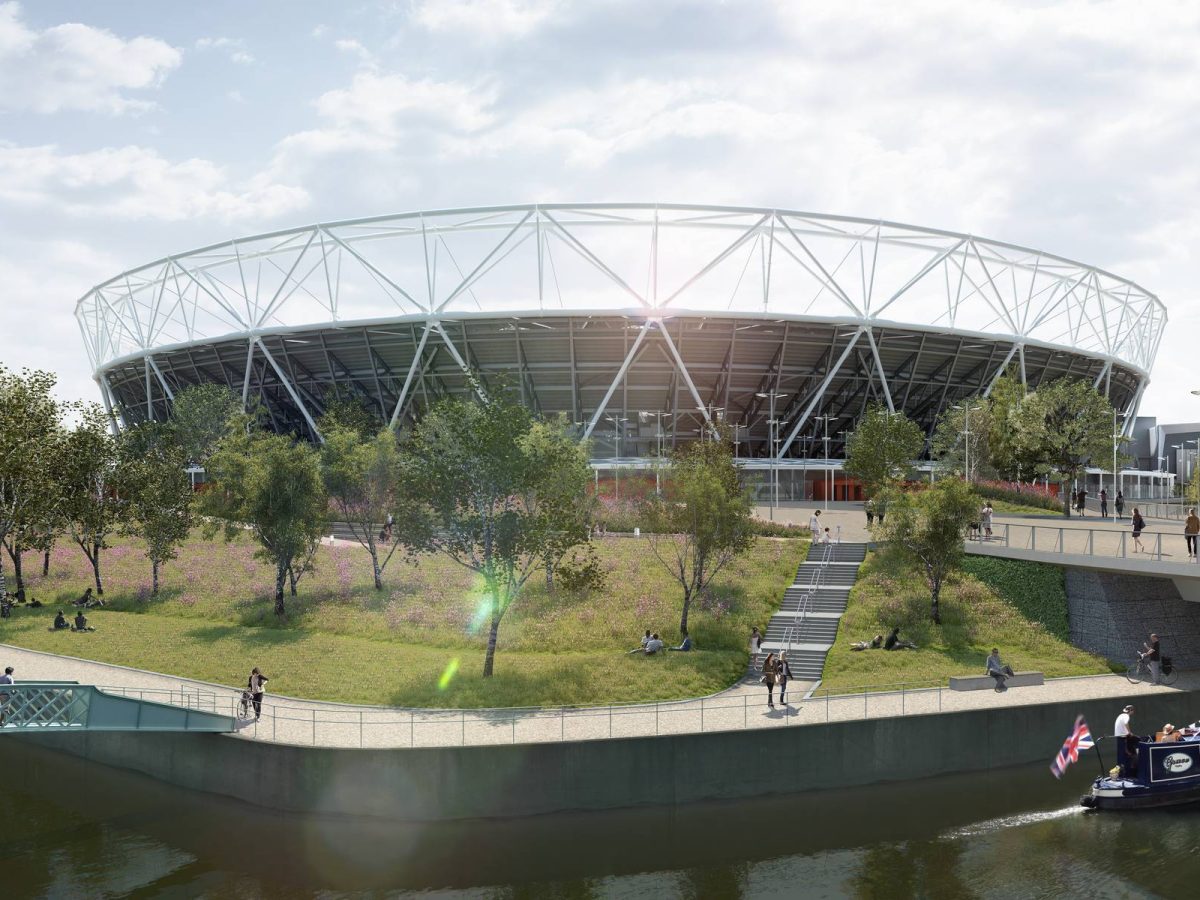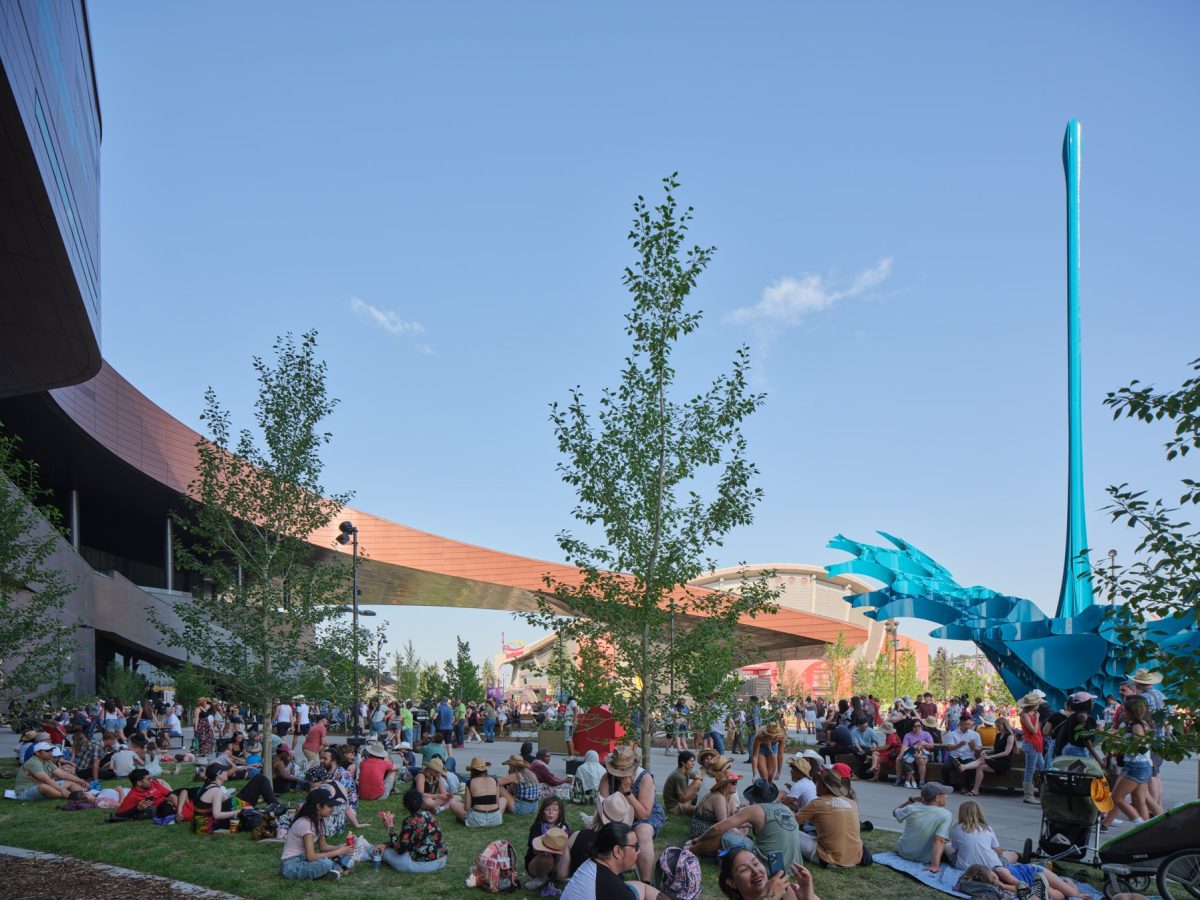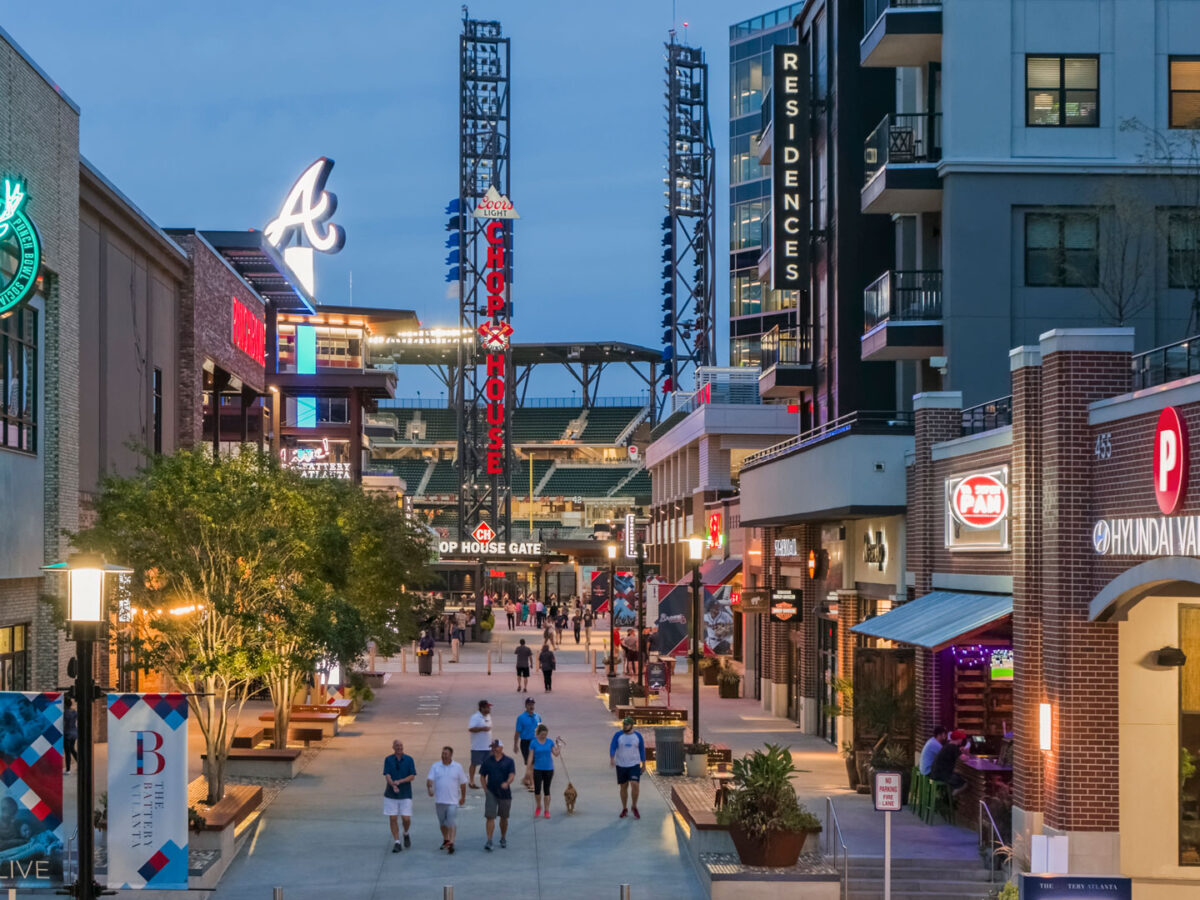April 15, 2025
The Future Place That Holds Us All: Reimagining Stadiums as Sustainable Hubs for Community
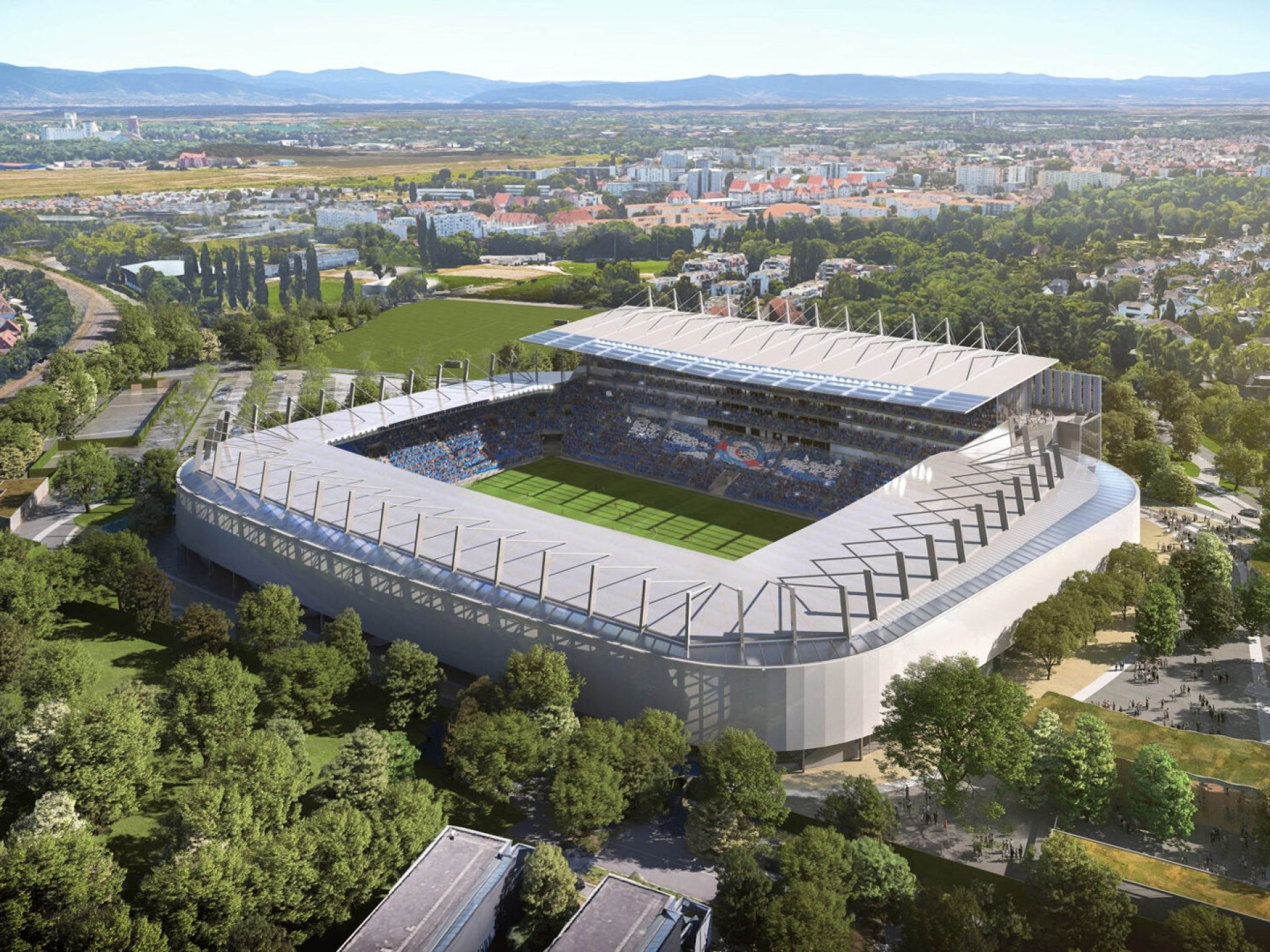
It will be a structure that embodies flexibility, not by adapting to different functions but through purposeful design that integrates them into its very core from the beginning. As these spaces blur the boundaries between venues, the need for distinct and dedicated “single-use” places fades away.
For the most part, though, today’s cityscapes include wholly separate concert halls, convention centers, meeting spaces, and stadiums that consume vast expanses of land and precious resources, and that go largely unused because these buildings stand docile between events. As separate structures, each demands its own ocean of parking, which often takes up even more land than the facilities they serve. These desolate, separate parcels demand energy, consume resources, and require maintenance even when unused.
By contrast, when a single structure can be transformed to adapt from one use to another, the city can breathe easier. Consolidated multi-use buildings reduce the environmental burden of constructing and maintaining multiple facilities, allowing the urban landscape to give space back to nature and the community.
At its essence, the new modern stadium and the area around it is becoming an example of people-mover architecture—buildings and spaces designed to guide and funnel hundreds of thousands of people seamlessly through their forms. These structures and thoroughfares must be facile and flexible, able to expand and contract, open and close, depending on the needs of the day. They will be tuned to master movement, their interiors built for rapid reconfiguration, their corridors designed to adapt and breathe with the flow of people. And in this ability to move and accommodate vast crowds lies untapped opportunities for sustainability.
That’s a future toward which we are actively moving. In the here and now, though, operators of existing venues looking to maximize the potential of their stadiums have opportunities and options for making their spaces the logical “next step” in creating the stadium environment of the future.
From Game Day to Every Day
It must start with community engagement, with local residents, businesses, and governments participating in the process of developing a wide variety of activities and attractions. A genuine interest in community needs, interests, and desires can spark the transition of single-use venues into year-round hubs of activity that generate revenue, strengthen ties with the community, and become thriving epicenters. It cannot be emphasized enough how crucial partnership and collaboration are to make these facilities effectively serve the needs of the community between game days.
Arenas, stadiums, and ballparks of all sizes, whether the homes of major or minor-league teams or smaller venues serving the surrounding community, are natural gathering places that can foster social cohesion and community building. Public-private partnerships, the community’s sense of ownership, and the active participation of local businesses can help sustain these facilities through ventures outside of sports events.
Year-round Community Anchors
Opening facilities to local amateur or youth sports teams, schools, churches, health systems, and charitable organizations establishes natural partnerships and generates attention-getting goodwill. Health and wellness programs are a natural fit, too. It’s hard to imagine any running or biking club, yoga class, or fitness enthusiast that would not be thrilled to be gifted time and space in a high-profile and popular location.
Outdoor space is often an overlooked but valuable commodity. Green spaces can be modified or expanded to create walking trails, gardens, and picnic areas. Those vast parking lots can be put to good and ongoing use for farmers markets, craft fairs, or seasonal festivals. Another advantage of all that empty space is that large numbers of exhibitors, participants, and visitors can occupy it—and with safe, convenient parking, which, rather than being a concern, becomes an attractive feature that draws crowds.
Reimagining Infrastructure for Broader Urban Impact
Actively playing a role in local infrastructure improvements can not only expand use of the venue but also have long-lasting economic benefits to the area as a whole. Upgrading transportation networks and access points drives connectivity, as well as the potential to raise property values and attract investment.
There are examples of successful expansion of the role that existing facilities can play in their communities. Many of the venues developed for the Barcelona 1992 Olympics are still in use today and have been a catalyst for large-scale urban redevelopment. Likewise, facilities built for the London 2012 Olympics continue to serve not only elite athletes but also other needs of the local community. Job creation is a real possibility, too. Beyond the initial construction, venues that expand their offerings create opportunities for work in facility and event management, retail, and hospitality. The Queen Elizabeth Olympic Park in London, for example, has become a vibrant employment hub, driving the creation of new businesses and thousands of jobs since the 2012 games.
Sports venues have always played a role in urban regeneration, and while that role can be expanded, it must be done with sensitivity. Gentrification can follow, possibly raising property values but, along with it, higher living costs, rents, and taxes, all of which have the unfortunate aftereffect of displacing long-term residents and businesses. The delicate balance of economic development and respecting the particulars of the existing communities must be a crucial and ongoing consideration.
The Future Stadium Starts Now
By reducing the need for multiple single-use buildings, the city can reduce its footprint and give space back to parks, urban farms, natural reserves and, most importantly, the community. From a sea of harsh hard surfaces dominated by concrete, brick, and steel, patchworks of green spaces emerge, rewilding and revitalizing the urban experience. Nature finds purchase, and the stadium sits at the center of this transformation, not as a symbol of consumption, but as a beacon of responsible growth.
This is the future of cities that stadiums can inspire, where design is not just about single-use structures but about creating spaces that adapt and respond to the needs of communities and their people, sustaining both. In the new landscape it inspires, the stadium district must become a model for cities to follow—where architecture doesn’t exist to move people but moves with them, creating a more sustainable, adaptable, and connected world.
Lorem ipsum dolor sit amet consectetur, adipisicing elit. Non facere corporis et expedita sit nam amet aut necessitatibus at dolore enim quis impedit eius libero, harum tempore laboriosam dolor cumque.
Lorem, ipsum dolor sit amet consectetur adipisicing elit. Illo temporibus vero veritatis eveniet, placeat dolorem sunt at provident tenetur omnis, dicta exercitationem. Expedita quod aspernatur molestias eum? Totam, incidunt quos.

